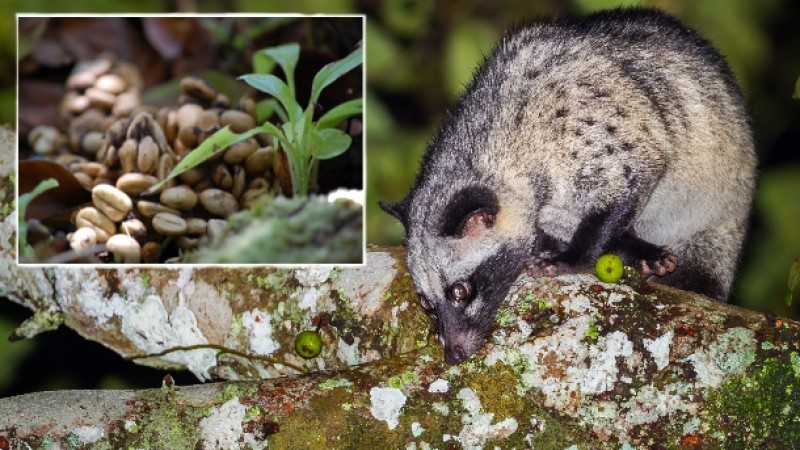
Coffee, a beloved beverage cherished by people across the globe, has evolved beyond a simple morning ritual. Among the myriad variations, there exists a coffee that stands as a testament to human fascination and creativity - Kopi Luwak. This coffee, known as the costliest in the world, is prepared in a unique manner that involves an unusual player in the process - the civet cat. This article delves into the intricate journey of Kopi Luwak, from the wild to the cup, exploring its origins, preparation, and the reasons behind its luxurious appeal.
The Origins of Kopi Luwak
Kopi Luwak, often referred to as Civet Coffee, finds its roots in the lush landscapes of Asia, particularly in countries like Indonesia, the Philippines, Vietnam, and India. The central character in this narrative is the civet cat, scientifically known as Paradoxurus hermaphroditus. This intriguing creature has a distinctive appearance, resembling a cat with a monkey-like tail. Beyond its exotic appearance, the civet cat plays a crucial role in shaping the coffee's unique flavors.
The Unconventional Coffee Harvest
What makes Kopi Luwak truly distinctive is its harvesting process. The civet cat, known for its selective palate, feasts on coffee cherries, consuming the semi-raw fruit. However, the cat's digestive system lacks the necessary enzymes to fully break down certain components of the cherry. As a result, the indigestible parts, including coffee beans, pass through the cat's digestive tract and are excreted as feces.
The Transformation: From Feces to Fine Coffee
While the notion of using animal feces for coffee production may seem off-putting, the process involves meticulous care and hygiene. The harvested feces undergo thorough cleaning and sterilization to ensure they are free from contaminants. The beans are then extracted from the feces, washed, and meticulously roasted to perfection. This intricate procedure serves as a testament to human innovation in harnessing nature's quirks to produce a remarkable culinary experience.
Science Behind the Splendor
The scientific rationale behind the appeal of Kopi Luwak lies in the cat's digestive enzymes. The beans' journey through the civet cat's digestive tract leads to subtle changes in their chemical composition. Notably, the proteins within the beans undergo structural modifications that result in reduced acidity. This transformation paves the way for a smoother, less bitter cup of coffee, enhancing its overall richness and flavor profile.
The Culinary Luxury and Global Appeal
Despite its unconventional origins, Kopi Luwak has found a coveted place on the tables of connoisseurs and coffee enthusiasts worldwide. It is often celebrated as a luxury item and has gained popularity in affluent regions like the Gulf countries, America, and Europe. The exotic allure of Kopi Luwak, coupled with its limited availability and unique flavor profile, has led to its reputation as the "coffee of the rich." Kopi Luwak, the result of an intricate interplay between nature and human ingenuity, exemplifies the ever-evolving relationship between food and culture. The journey of coffee beans through the digestive tract of the civet cat, followed by a meticulous process of transformation, results in a coffee that appeals to the palates of the discerning. This remarkable coffee variety not only intrigues with its unique narrative but also challenges perceptions of culinary norms, reminding us of the boundless ways in which nature can inspire human creativity.
Bangalore to Experience Zero Shadow Day: What You Need to Know
Celebrating Ihana Dhillon: A Star's 28th Birthday with a Noble Cause
Zedit Magazine: Fashion's Mystical Empowerment Unleashed by Zufi Alexander